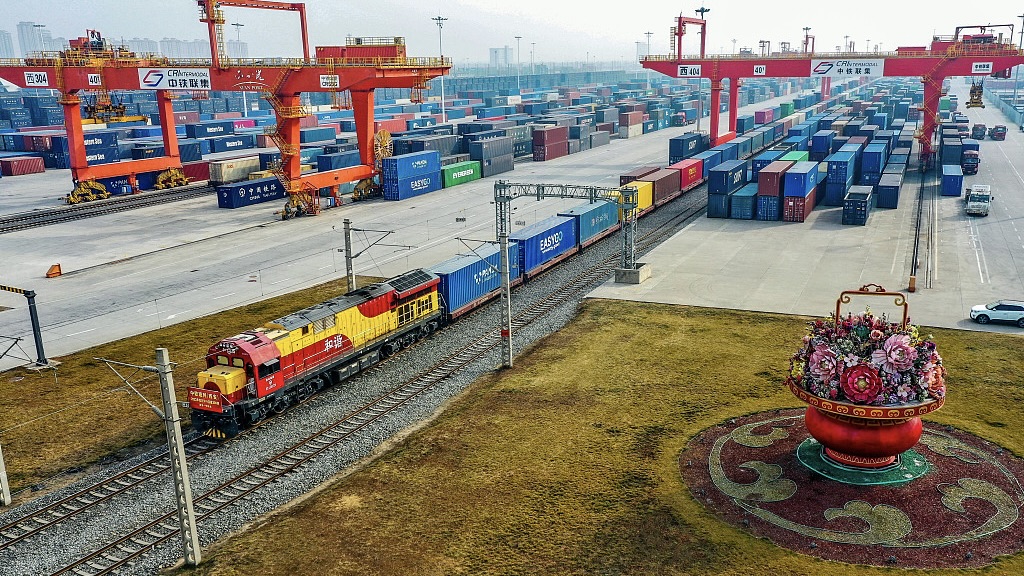Artificial Intelligence (AI) is no longer a distant concept of futuristic imagination but a transformative force reshaping industries, economies, and societies globally. China, as a front-runner in AI innovation, is leveraging this technology not only to enhance its own developmental trajectory but also to create opportunities for other nations, especially those along the Belt and Road Initiative (BRI). With its unique blend of socialism with Chinese characteristics, political philosophy of coexistence, and emphasis on human resource development, China presents an integrated model for sustainable development in the AI era. For countries like Pakistan, already closely aligned with China through the China-Pakistan Economic Corridor (CPEC), the potential for benefiting from this AI revolution is immense. China’s rapid rise in AI has been fueled by a consistent focus on human resource development since its inception. This commitment, deeply rooted in its political and social philosophy, has allowed China to make monumental progress across all sectors. From health and banking to education and robotics, AI has become a cornerstone of China’s growth, enabling the nation to streamline operations, improve efficiencies, and generate new economic opportunities. AI’s integration into human resource development is a testament to its supportive role rather than being a replacement for human capabilities. By augmenting human intelligence, AI enhances productivity, encourages innovation, and equips the workforce with tools to adapt to the rapidly evolving technological landscape. China’s prioritization of AI education, vocational training, and research has ensured that its workforce remains at the forefront of global technological advancements.
China’s approach to AI is intrinsically tied to its political philosophy of socialism with Chinese characteristics. This ideology emphasizes a harmonious blend of state intervention and market forces, enabling equitable development while fostering innovation. In the AI sector, the government plays a pivotal role in policy formulation, funding research, and ensuring that AI technologies align with broader societal goals such as poverty alleviation, healthcare access, and environmental sustainability.
Unlike Western models, which often prioritize profit maximization, China’s AI initiatives are geared towards societal well-being and coexistence. AI applications in healthcare, for instance, aim to democratize access to medical services, reduce healthcare disparities, and enhance the quality of life for millions. Similarly, AI-driven agricultural innovations support rural development, contributing to China’s poverty alleviation goals. China’s technological rise in recent decades has been nothing short of extraordinary. This progress is underpinned by strategic investments in research and development, a robust education system, and a policy environment conducive to innovation. Government-led initiatives such as the “Made in China 2025” plan and the New Generation Artificial Intelligence Development Plan (AIDP) have provided a clear roadmap for AI development. China’s leadership in robotics and AI-powered systems is now globally recognized. The country’s advanced robotics, powered by cutting-edge AI algorithms, are being deployed in manufacturing, logistics, and even healthcare, exemplifying the transformative potential of these technologies. China’s advancements in AI are not confined to its borders; they have significant implications for global development. Through the BRI, China is fostering collaboration with partner countries, sharing its technological expertise, and enabling them to harness the benefits of AI. For developing nations, this presents an opportunity to leapfrog traditional development stages and adopt advanced technologies to address critical challenges such as healthcare, education, and infrastructure development.
The integration of AI into BRI projects ensures greater efficiency and sustainability. AI-driven systems are used to optimize logistics, monitor environmental impacts, and enhance infrastructure resilience. Such innovations can be transformative for countries like Pakistan, where AI can play a vital role in improving governance, service delivery, and economic growth. CPEC, a flagship project of the BRI, serves as a cornerstone for Pakistan-China collaboration. The incorporation of AI into CPEC projects can significantly enhance their impact, particularly in areas such as infrastructure development, urban planning, and resource management. AI can revolutionize Pakistan’s agriculture sector through precision farming, optimize energy usage in power projects, and improve healthcare access in remote regions via telemedicine. Additionally, AI-powered data analytics can strengthen governance and enable evidence-based policymaking. For Pakistan, the transfer of AI knowledge and skills from China offers an unparalleled opportunity to build its technological capacity and drive sustainable development.
AI in China represents a tool for altering the base structure of society by transforming the means of production. It empowers the proletariat by reducing the drudgery of manual labor, creating conditions for intellectual engagement, and enhancing societal well-being. However, it also raises concerns about potential exploitation and concentration of power, underscoring the need for equitable AI policies that prioritize public welfare over private profit. By integrating AI into everyday life, China is not only shaping its own socio-economic dynamics but also challenging Western technological hegemony. This approach creates a counter-narrative that emphasizes collective progress and diversity, resonating with subaltern nations seeking alternatives to Western models of development. Despite its benefits, AI also poses challenges, particularly concerning employment and ethics. Critics argue that AI could exacerbate unemployment by replacing human labor in certain sectors. However, proponents counter that AI creates new job opportunities, particularly in tech-driven industries, and can free human resources for more creative and intellectually rewarding tasks.
China’s emphasis on coexistence and diversity in its AI policies provides a framework for addressing these concerns. By promoting collaboration between humans and machines, China envisions a future where AI complements human capabilities rather than replacing them. Ethical considerations, such as data privacy and algorithmic bias, are also being addressed through stringent regulations and oversight mechanisms.
China’s AI advancements offer valuable lessons for the global community. Its focus on innovation, sustainability, and equitable development sets a benchmark for other nations. For BRI countries, particularly those in the Global South, China’s AI expertise provides an opportunity to bridge technological gaps, enhance resilience, and foster inclusive growth. For Pakistan, collaboration with China in the AI sector can unlock new avenues for economic growth and social progress. By leveraging CPEC’s framework, Pakistan can adopt AI technologies to modernize industries, improve governance, and empower its workforce. Partnerships in AI research and development can also strengthen academic and technological ties between the two nations.
China’s strides in AI exemplify the transformative potential of technology when guided by a vision of coexistence, diversity, and innovation. By prioritizing human resource development and aligning AI with societal goals, China has demonstrated how technology can be a force for good. For the global community, and particularly for countries like Pakistan, China’s AI journey serves as both an inspiration and a blueprint. As nations navigate the challenges and opportunities of the AI era, China’s model of integrating technology with human development offers a path toward sustainable and inclusive progress. With its leadership in AI and its commitment to shared prosperity, China stands as a beacon of hope in an increasingly interconnected world.

Prof. Dr. Muhammad Shakeel Ahmad is Chief Executive of Global Strategic Institute for Sustainable Development (GSISD).














